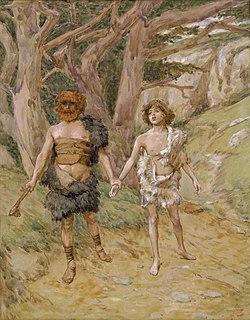Comparisons
Form critics consider the two lines as corruptions of one tradition. Both the similarities and the differences between lines are significant and do not admit simple explanation. Still, there is a general consensus that the Cainite list was from the Jahwist source, while the Sethite was added in from the Priestly source. [3] [4] [5] [6]
The Sethite genealogy may also be connected to the Sumerian King List. [3] [4] [5] [7] Evidence for this include the solar symbolism of the seventh figure on each list (the Sumerian king Enmeduranna sharing his name with the city where worship of the sun god was focused, Enoch living 365 years). [3] Like Enoch, Enmeduranna's advisor Utuabzu ascended to heaven. [7] Fritz Hommel further argued that Amelon was Enosh (both third in the list with names meaning "mankind"), that Ammenon was Cainan/Cain (both fourth and connected to craftsmanship), and so on; noting that the tenth in each line was a hero who survived a world flood. Still, this position is argued against due to linguistic incompatibilities in half the names. [4] Similarities between Irad and Eridu have also been pointed out. [8] Thomas Kelly Cheyne argued that the two genealogies may also be connected to a North Arabian genealogy, one reproducing the other. Cheyne claimed that Mahalalel was a corruption of Jerahmeel, and Methuselah was a corruption of Ishmael. [5] Cheyne's theories are now rejected, however. [9]
The following table displays the most common line of comparison between the Sethite and Cainite lines (which reverses much of the Cainite list), [3] [5] [6] [10] as well as North Arabian genealogy (per Cheyne), [5] and the Sumerian king list. [7]
This page is based on this
Wikipedia article Text is available under the
CC BY-SA 4.0 license; additional terms may apply.
Images, videos and audio are available under their respective licenses.
